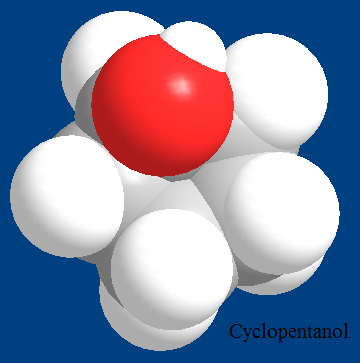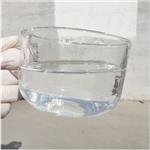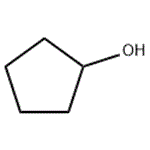Physical and chemical properties
Cyclopentanol is also known as hydroxy cyclopentane. It is colorless oily liquid. It has a special mildew smell. Relative molecular mass is 86.14. The relative density is 0.9478. Melting point is-19 ℃. Boiling point is 140.85 ℃, 56.4~57.4 ℃ (4.533 × 103Pa), 53 ℃ (1.333 × 103Pa). The refractive index is 1.4530. The flash point is 51℃. It is Slightly soluble in water, soluble in alcohol, ether and acetone. It can form azeotropic mixture with water, the content of product is 42% at this time, the azeotropic point is 96.3℃.

Figure 1 is the structural formula of cyclopentanol spherical
[Uses] Cyclopentanol is mainly used for the production of pharmaceutical raw materials, dyes, perfumes. It is also used for solvent of drugs and spices.
[Preparation method] under the effect of barium hydroxide, adipic acid goes through dry distillation to get cyclopentanone, and then with lithium aluminum tetrahydrocannabinol occurs hydrogenation to obtain cyclopentanol in ether.
This information is edited by Chemicalbook Xiaonan (2016-12-03).
Uses
(1) Cyclopentanol is used in medicine, dyes preparation and spices, it can also used for solvent of drugs and spices.
(2) It is used for organic synthesis intermediates, it is used for pharmaceuticals, dyes and spices production, it is also used for solvent of drugs and spices.
(3) It is used as spice and medicine solvent and dye intermediates.
(4) It is used in medicine, dyes and perfumes production, it is also used for solvent of drugs and spices.
Preparation method
Under the effect of sodium hydroxide, adipic acid goes through dry distillation to obtain cyclopentanone, cyclopentanone and lithium aluminum tetrahydrocannabinol ether occurs hydrogenation to get it in diethyl at room temperature. Or in the presence of copper-chromium catalyst at 150℃, 150 atmospheric pressure cyclopentanone occurs hydrogenation or in the presence of platinum catalyst in 0.2-0.3MPa occurs hydrogenation to obtain crude product, crude distillation derives products. Material consumption fixed: adipic 2500kg/t, barium 900kg/t.
Uses
Cyclopentanol is a versatile compound used as a building block, intermediate and solvent.
Uses
Cyclopentanol can be used as:
- An alkylating agent in the preparation of alkylated aromatic compounds using Fe3+-montmorillonite catalyst via Friedel–Crafts alkylation reaction.
- A reactant in the acylation of alcohols with an acid anhydride or acid chloride.
- A substrate in the synthesis of high-density polycyclic aviation fuel by the Guerbet reaction.
Definition
ChEBI: Cyclopentanol is the simplest member of the class of cyclopentanols bearing a single hydroxy substituent. The parent of the class of cyclopentanols.
General Description
A colorless viscous liquid with a pleasant odor. Slightly less dense than water. Flash point 124°F. Vapors heavier than air. Used to make perfumes and pharmaceuticals.
Air & Water Reactions
Flammable. Soluble in water.
Reactivity Profile
Cyclopentanol is an alcohol. Flammable and/or toxic gases are generated by the combination of alcohols with alkali metals, nitrides, and strong reducing agents. They react with oxoacids and carboxylic acids to form esters plus water. Oxidizing agents convert them to aldehydes or ketones. Alcohols exhibit both weak acid and weak base behavior. They may initiate the polymerization of isocyanates and epoxides.
Health Hazard
May cause toxic effects if inhaled or absorbed through skin. Inhalation or contact with material may irritate or burn skin and eyes. Fire will produce irritating, corrosive and/or toxic gases. Vapors may cause dizziness or suffocation. Runoff from fire control or dilution water may cause pollution.
Fire Hazard
HIGHLY FLAMMABLE: Will be easily ignited by heat, sparks or flames. Vapors may form explosive mixtures with air. Vapors may travel to source of ignition and flash back. Most vapors are heavier than air. They will spread along ground and collect in low or confined areas (sewers, basements, tanks). Vapor explosion hazard indoors, outdoors or in sewers. Runoff to sewer may create fire or explosion hazard. Containers may explode when heated. Many liquids are lighter than water.





